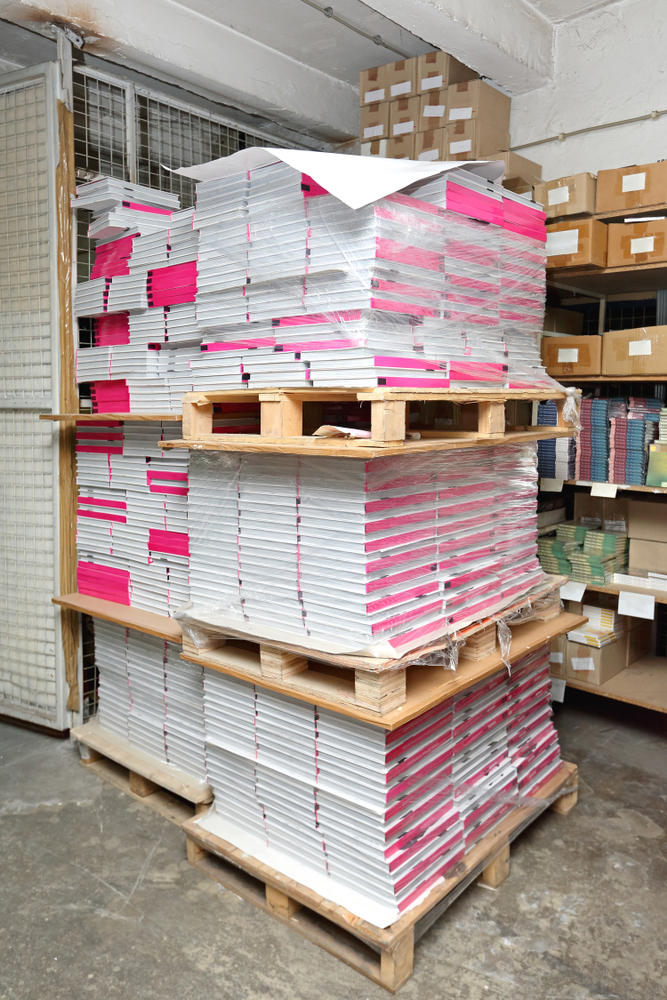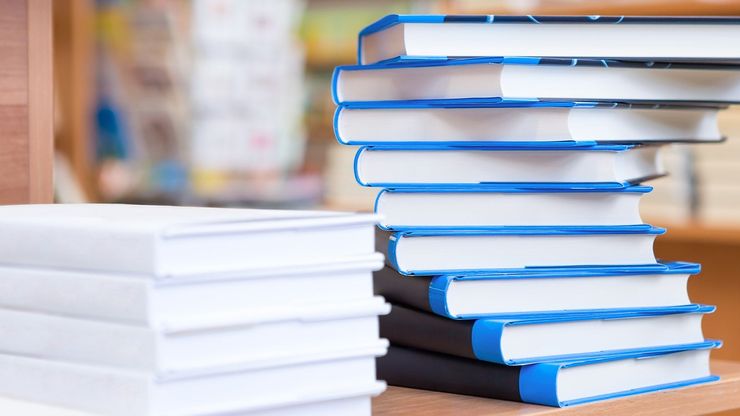Why Book Printing Remains a Crucial Component of the Posting Industry
Book printing remains to hold considerable significance in the posting market. Its special responsive experience offers something electronic styles can not replicate. The weight, structure, and fragrance of a published Book develop a profound emotional link. Additionally, print media champs diverse voices and sustains independent writers. book printers near me. As the industry progresses, concerns emerge about the function of print in a significantly electronic globe. What implications does this have for the future of literary works?
The Substantial Experience of Reading
The tactile enjoyment of reading a published Book supplies an one-of-a-kind sensory experience that electronic formats typically fall short to duplicate. The weight of guide in one's hands, the texture of the web pages, and the noise of transforming each leaf develop a physical link that improves interaction. Viewers can enjoy the scent of ink and paper, which stimulates emotions and memories connected to past analyses. This sensory communication cultivates a deeper focus and immersion, as the viewers is less most likely to be distracted by notices or display glare. The act of marking pages, underscoring message, or simply really feeling the development of a tale via physical web pages adds layers to the reading experience. For many, the ritual of checking out a published Book stands in contrast to the ephemeral nature of digital material, strengthening a feeling of ownership and permanence that solidifies the bond between the narrative and the viewers.
The Visual Appeal of Printed Books
Charm in printed Book transcends mere text; it includes layout, typography, and format. The aesthetic components of a publication contribute remarkably to its general influence and visitor engagement. A well-crafted cover, as an example, attracts the eye and shares the essence of the story within. Typography plays a necessary role; the choice of font can evoke feelings and boost readability, while the thoughtful setup of message guides the viewers's trip through the web pages.
Furthermore, the interplay of pictures and images enriches the reading experience, supplying aesthetic breaks and improving comprehension. The responsive high quality of paper, whether distinctive or smooth, adds one more layer of visual enjoyment, allowing readers to attach with the physical things in such a way that electronic formats can not duplicate. Ultimately, the aesthetic charm of published Book cultivates a deeper appreciation for literature, making each quantity not simply a resource of details but a masterpiece in its own right.
Supporting Independent Authors and Diverse Voices
A growing variety of authors and visitors identify the significance of sustaining independent authors and varied voices within the literary landscape. This shift is vital in promoting a broader selection of stories and experiences that mirror the complexities of modern society. book printers near me. Independent writers commonly bring fresh viewpoints that test standard narration and address underrepresented motifs, enriching the literary tapestry
Book printing plays an essential role in this support by enabling these writers to produce tangible works that get to wider target markets. With the arrival of print-on-demand innovations, independent authors can now publish their Book without the restrictions of typical posting, enabling greater creative thinking and technology. Additionally, printed Book provide a physical tool with which varied voices can be commemorated and shared. By fostering an inclusive publishing setting, the industry not only encourages these writers but also enhances readers' access to a richer, extra varied literary canon.

The Environmental Effect of Book Printing
Recognizing the value of diverse voices in literature additionally accentuates the ecological effects of Book printing. The manufacturing of Book includes significant source usage, including water, power, and raw products like paper. Conventional printing approaches usually depend on processes that emit greenhouse gases and create waste. Additionally, the logging related to paper production presents dangers to biodiversity and contributes to environment adjustment.
The market is progressively adopting lasting practices. Numerous authors are discovering Visit Your URL environmentally friendly products, such as recycled paper and vegetable-based inks, and carrying out energy-efficient innovations in printing processes. Certifications like Forest Stewardship Council (FSC) assure that paper sources are responsibly managed.
While the environmental footprint of Book printing stays a worry, the commitment to sustainability within the market is growing. This change stands for a crucial action in the direction of stabilizing the love of published literature with the duty to shield the world.
The Future of Book Printing in a Digital Age
As the digital landscape continues to advance, the future of Book printing deals with both challenges and opportunities. While electronic books and electronic web content dominate, the tactile experience of published Book stays irreplaceable for numerous viewers. Publishers are increasingly recognizing the value of print, specifically in niche markets and unique versions that appeal to enthusiasts and collection agencies. Technological innovations, such as print-on-demand services, enable for extra efficient and sustainable manufacturing, reducing waste and stock costs.
The combination of enhanced reality and interactive components into print can enhance viewers interaction and create unique experiences. This merging of digital and print uses an encouraging method for rejuvenating the industry. Ultimately, the future of Book printing may lie in its capacity to innovate and adapt, mixing traditional approaches with contemporary innovation to meet evolving customer choices while keeping the treasured essence of the printed word.
Frequently Asked Questions
How Does the Book Printing Refine Job?
Guide printing procedure involves numerous stages: pre-press prep work, including format and proofreading; printing, where images and text are transferred to paper; binding, which constructs the pages; and ending up, ensuring the final product is polished and all set.
What Are the Costs Related To Book Printing?
The prices connected with Book printing vary based on elements like print volume, paper quality, binding type, and layout intricacy. Comprehending these components assists authors spending plan efficiently and make notified choices regarding their printing requires.

Can Self-Publishers Easily Access Book Printing Providers?
Self-publishers More Info can easily access a variety of Book printing services. With countless on-line systems and regional printing shop available, they have ample alternatives for generating their Book, providing to varied needs and spending plans properly.
What Materials Are Commonly Used in Book Printing?
Common materials used in Book printing consist of different sorts of paper, such as uncoated and layered stock, together with binding materials like adhesive, see this page string, and covers made from cardboard or adaptable plastics for durability and aesthetics.
Just How Can Authors Select the Right Printing Company?
Authors can choose the proper printing firm by researching alternatives, comparing prices and top quality, examining previous work, examining customer care, and looking for referrals from various other authors to ensure their vision is accurately realized in print. book printers near me.
Book printing continues to hold considerable value in the posting sector. Book printing plays an essential role in this assistance by making it possible for these authors to generate concrete jobs that get to broader audiences. Identifying the significance of varied voices in literary works likewise brings interest to the environmental effects of Book printing. As the digital landscape continues to advance, the future of Book printing challenges both encounters and chances. The expenses associated with Book printing vary based on factors like print volume, paper quality, binding type, and layout complexity.